Steps For Creating a Fashion Mood Board
1. Brainstorm Ideas
The first step in the creation process is idea generation. First you need to think about the concept that interests/inspires you and then make a mind map around the words describing that concept. It can be done with pen and paper or on your laptop using paint, Adobe Illustrator or Photoshop. For example:
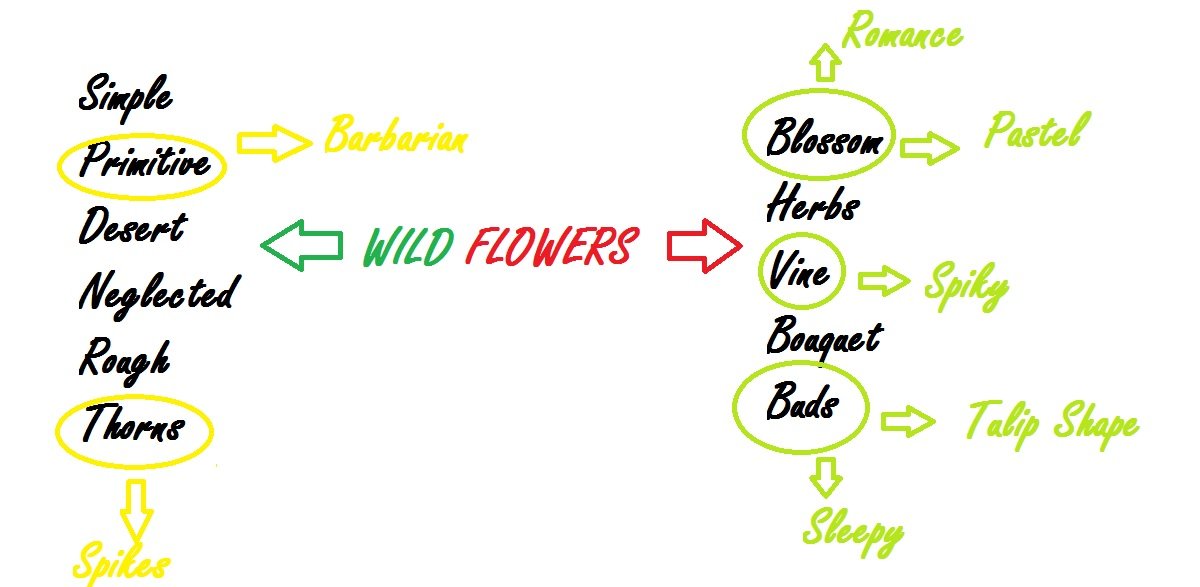
Here you can write anything that comes to your mind. Let your ideas come and don't worry how they sound at the moment, just listen to your intuition and write them down. Usually you can get the most out of this process in just 5-10 minutes of undisturbed brainstorming.
If you are not happy when you are done with brainstorming, you can take a day or two away from the whole idea and let your mind be free. Then repeat the process again.
2. Use Pinterest to Find Inspirational Photos
Pinterest is such a great visual tool for all creators, especially fashion designers and illustrators. It's free to use and there are plenty of images to search and look trough anywhere and anytime.
All you need to do is create a new board and name it by your concept idea. Type in your keywords from the mind map (wild flowers,spikes, thorns, blossom,buds...), browse through images and pin the ones you like onto your board.
3. Visit a Library
When you are looking for inspiration, a library is always a great way to start. With tons of great resources, you will certainly find some images that spark your imagination and inspire your work. Look through books related to your concept of interest and copy images that fit into overall mood and you like them the most.
4. Filter and Compose
Take all the photos you liked from Pinterest, library, magazines and other sources and go through them. Ask yourself why are you attracted to those images (Color, shapes, concept)? Try to find a common theme around those images and filter images that represent your concept the best. Then you can either put those images together in an Illustrator Board/Photoshop or you can print/copy/cut them and make your board by hand.
If you find inspiration in a piece of fabric, color or some object, you can add that to your mood board at the end. You can also use Pixlr (free tool) to put together a collage that will serve you as a starting point and you can develop it more later in your process book.

I loved the idea of opposition - something wild, dark, heavy, strong and fearless combined with flowers that are usually gentle, pretty and colorful. That is why I chose these images.
The first thing that caught my eye was heavy fur in combination with a romantic dress. But fur wasn't quite the thing I wanted to include in my designs, so I went for something stronger and heavier like leather and spikes. I also loved flower crowns, moody colors, lace and closed flower shapes.
Next step is to go over your inspiration and analyze images for your final mood board. Why do you like them? What can you do with them? I used different concepts in my final mood board that I merged together: heavy materials vs lace, moody dark colors vs pop of light pink and adding texture with studs, leather and metal.

And there it is! You have a mood board which is the first step in a fashion design process. After this comes working on colors and textures, choosing shapes and proportions and presentation at the end.
Creating a Mini Collection
Color Story
If you are serious about being a good fashion designer, color theory knwledge is a must. You can take classes about it in art schools or visit a library and pull out all the books on that subject.
You can go back to your visual resources and pull colors for your color story or refer to your final mood board.
There are 4 questions you can ask yourself looking at your mood board that will help you create a color story:
- What is the overall mood board look?
- Do you have warm or cold colors?
- Are they harmonious or contrasted?
- Are they dark or light or both and in which ratio?
- Are the colors dull or bright?
Looking at my mood board I can see that the overall atmosphere is moody and heavy with few pops of brightness. Most colors are cold with a few warm accents. Main colors in my store include violet,blue,grey, black and some pink. The colors look rather harmonious than contrasted and most colors are dark. Shades are mostly dull with couple of details that are brighter and pop out against the overall mood. There is also the element of shiny metal which is in contrast with darkest shades.
These are the colors that attract me the most from my mood board:
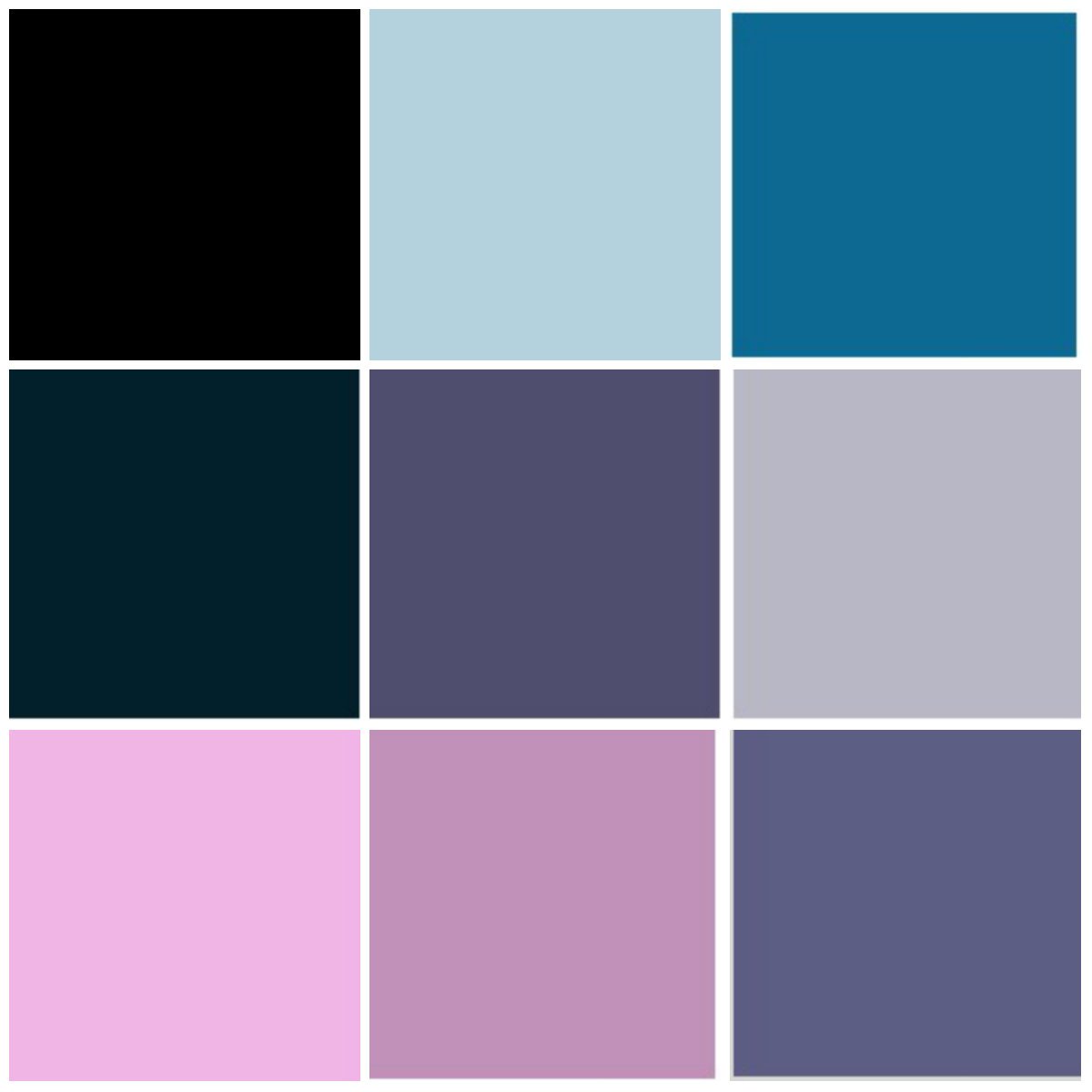
When I have my colors I can start playing with proportions and my final color story should be created.
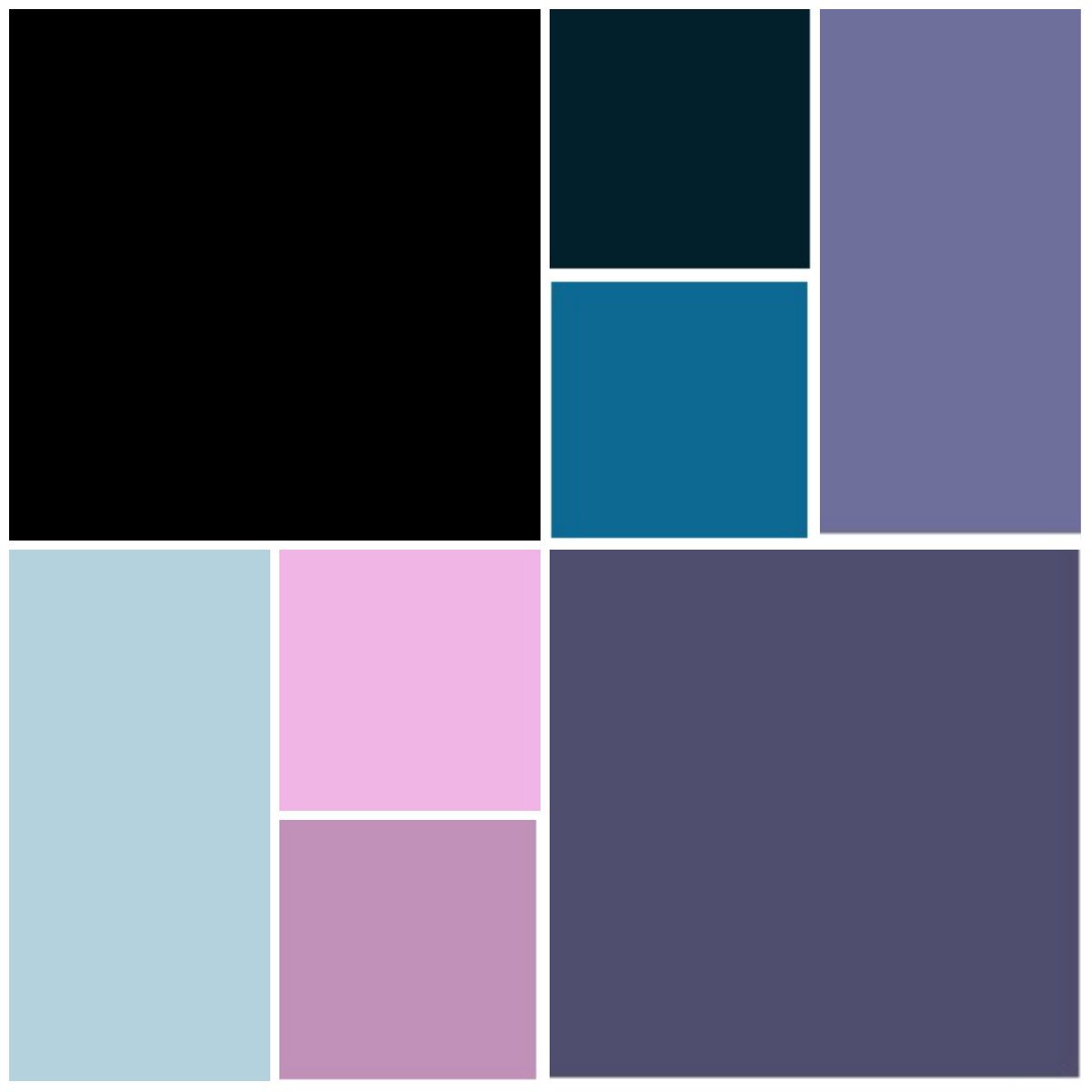
I want my collection to focus mainly on black and this faded violet color. In addition to that, I like dark blue and dark cyan color, as well as some grayish blue to be strong in the collection as well. And at the end I liked a touch of light violet pink to add a little bit of brightness to the collection and some moody violet pink to tie everything together.
Choosing Fabrics
This concept 'wild flowers' reminds me of two opposites - gentle flowers and then something wild and strong, almost animalistic. My vision would work best with chiffon as the soft, breezy fabric and then leather and suede fabric as the opposite of that. Spiked studs are also one of the key elements in this collection as they remind me of thorns on wild roses and other wild flowers. I also liked black lace in combination with moody floral prints.
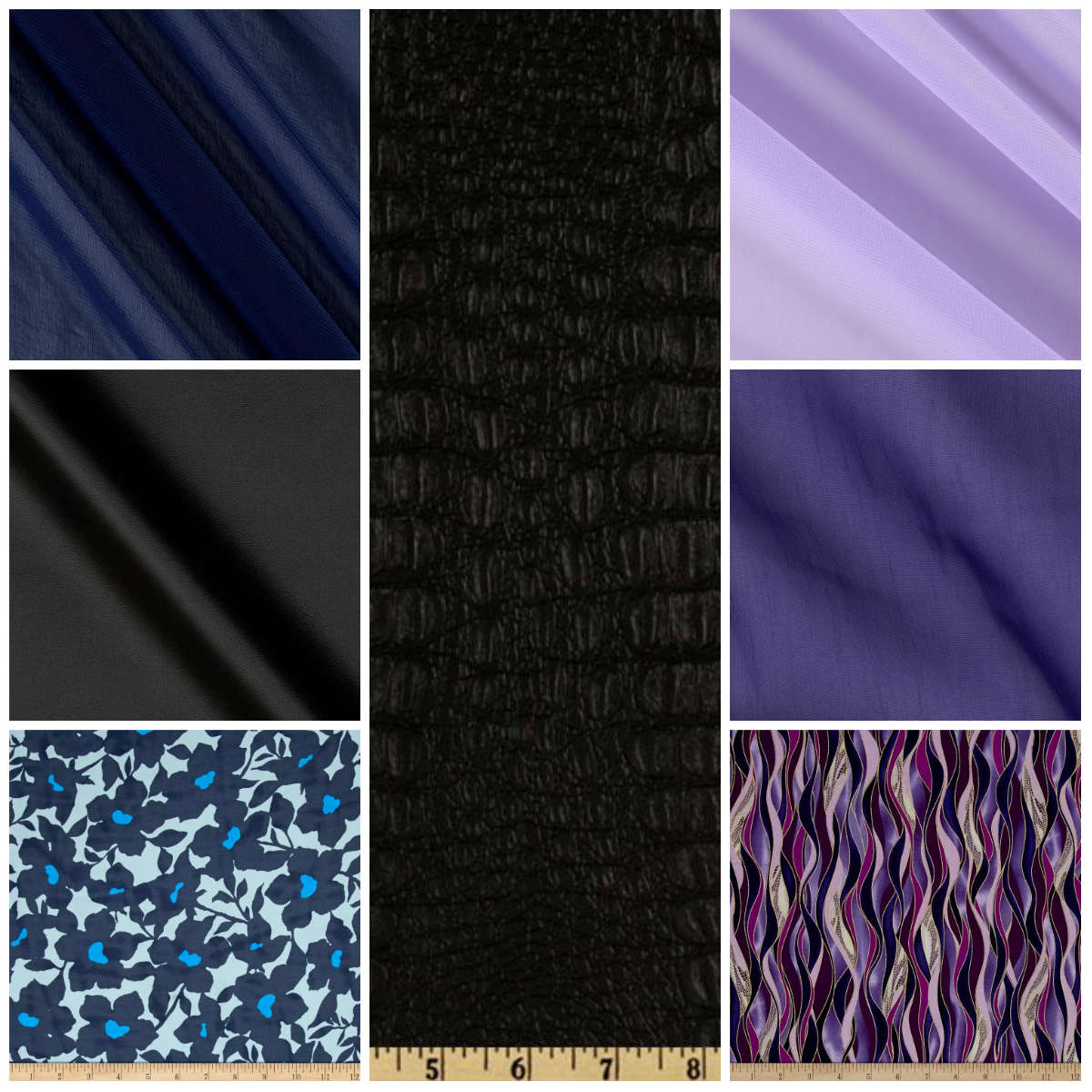
Working on Shapes and Proportions
Now that I know what fabrics I would like to use for this collection inspired by wild flowers, I can start working on my shapes and silhouettes. The first sketches are just quick ideas, blocking shapes and adding a bit of color to get the overall feeling.
The number of preliminary sketches should be at least 20-50 if you are looking to have around 10 complete looks at the end. When you have these quick sketches in front, you can go through them and analyze if they are in harmony with the design concept, will they be difficult to create time-wise and cost-wise.

Choosing Final Outfits
Select the best garments to compile a harmonious wardrobe that has enough tops and bottoms to be wearable as if it was someone's wardrobe. This is a mini collection so I decided to use only three looks from my quick sketches.
When I select my final silhouettes, then it is time to work on those looks more carefully. First I will draw flats of these garments and then final fashion illustrations that represent my mini collection with this concept.I also like to draw small swatches of fabric so I know in advance what colors I will use to represent them. These flats are drawn by hand and not accurate because they are made just for fun and not production. Usually, I put some notes about details of each garment, like material, type of pocket, collar etc.

Final Illustration
When I have my flats done and have chosen fabrics and colors for certain garments, then I can focus on illustrating a final representation of this mini collection. I chose a layout that contains three different fashion figures shown in a typical fashion pose. and this is the final result and my three final looks inspired by wild flowers.
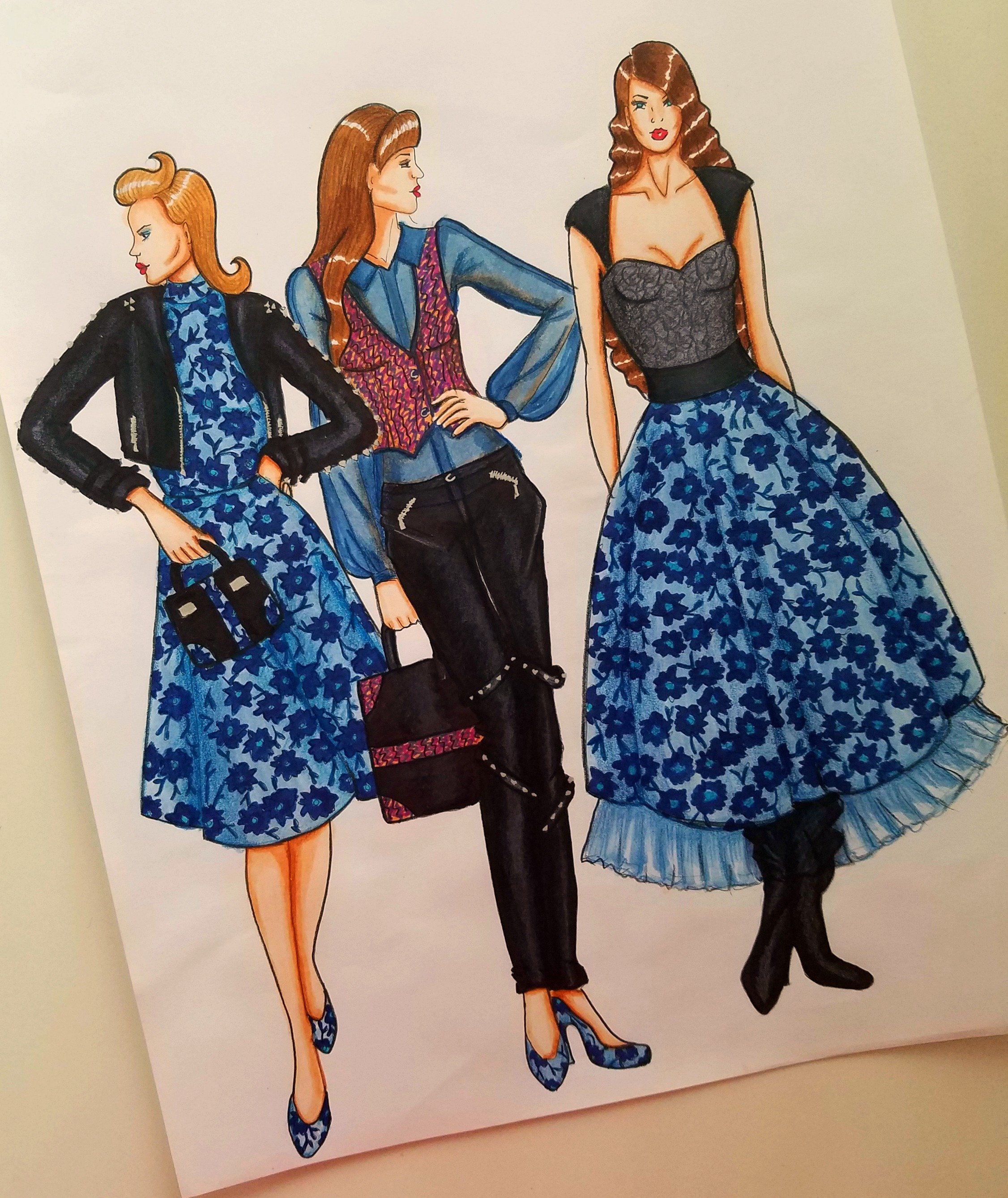

Excellent explanation, thank you very much!
This was very explanatory and super helpful!
thank you!
wao! so explanatory. i think Im begining to understand this whole mood board concept.